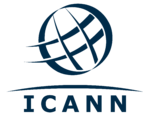ICANN 11
| Dates: | 12-15 November, 2001 |
| Location: | California |
| Host: | USA |
| Venue: | Marina Beach Marriott |
| Website: | ICANN 11 |
ICANN 11 took place in Marina Del Ray, California in November, 2001. This was to be the second ICANN Event that was hosted in this area, and was also hosted in the same hotel, the Marina Beach Marriot Hotel.
Key developments[edit | edit source]
The meeting was the first event to not follow the original ICANN meeting format, as between the dates of the 13th – 15th November, all meetings were restricted to discuss the Security and Stability of the Internet naming and address allocation systems, which was to be followed by a meeting of the ICANN board of directors on the final afternoon.
The First day of the event was still to be scheduled for an open forum to discuss all other topics. As always the meetings on the first day were not to be restricted and were open for all interested persons to attend. Due to the heightened security status for the event, Pre-registration was required for all who wished to attend the meetings on the first day.[1]
After a long and drawn out governmental procurement process, the United States Government had entered into an agreement with NeuStar, Inc. which was to provide registry services for the .us country-code top-level domain (ccTLD), which then replacing VeriSign, Inc. Consistent with this change in the contracted operators, on Friday, 16 November 2001, the .us ccTLD was to be redelegated from VeriSign to NeuStar.
This redelegation had occurred before the final completion of the normal IANA requirements. The United States Government had informed ICANN in November of 2001 that, because of the complexities of U.S. procurement laws, it was not able to now extend the existing arrangements with VeriSign nor were they able to complete the necessary three-way set of communications among itself, ICANN, and NeuStar. This then presented a peculiar set of circumstances: ICANN was now faced with the choice of either authorizing a redelegation, or creating a situation where the event could have occurred regardless, but there would be inconsistent data in the IANA database. Given ICANN's primary mission statement which is a focus on stability (and security as part of achieving stability), ICANN had authorized an emergency redelegation prior to an appropriate contract.[2]
Outcomes[edit | edit source]
Key sessions[edit | edit source]
This event was scheduled to hold various sessions, over the four days the event had lasted. All sessions held a good reception and there were many topics and discussions as a part of these sessions. Some of the more distinguished sessions from the event were as follows -[3]
- Non-security-focused meetings of ICANN's various constituent organizations
- Public forum on ICANN At Large
The Public Forum is the main highlight for most ICANN Meetings, there is always much on the agenda to discuss during meetings. This event's agenda for the public forum was on the Security and Stability of the Internet Naming and Address Allocation Systems.
- Constituent-focused working meetings for registries, registrars, ISP's.
Focused workgroups were now becoming common at the ICANN events, this working session was to focus on the tasks registries and registrars had to contend with on a weekly basis.
- ICANN Public Forum on DNS security/stability ◦Reporting session
The Security of the DNS was the main discussion point during this session, although this matter had been brought up during other events, there had not been a dedicated session, to resolve any outstanding issues.
- ICANN Board meeting
The ICANN board meeting has been held at every event and it had become common that this meeting was to be webcast for all persons, who wished to see the outcome of the meeting.
ICANN 11 discussed many key topics, with the main subject being security and stability. This event held various sessions which included the use of panels. [4]
- Root Name Server Security
This meeting was to provide an overview of the present DNS Root Name Server system, security aspects, short-term plans for enhanced security, and also longer-term considerations.
- The Past and Present security of the DNS Server
This session was to include an overview of current security aspects of the DNS protocol and domain nameservers, and plans for future security enhancements, such as DNSSEC.
- TLD Registry & Nameserver Security
This session was set to become an overview of security practices and considerations for Top-Level Domain registry and nameserver operations.
- Registries and registrars: Recovery & restoration
This session had discussed topics such as the Management of crisis situations. Focus on both preparation for and recovery from crisis situations, with an emphasis on post-Sept 11 threat analysis and response.
ICANN Board[edit | edit source]
- Stuart Lynn: President/CEO
- Vint Cerf: Chair
- Alejandro Pisanty: Vice-chair
- Linda Wilson
- Richard Thwaites
- Frank Fitzsimmons
- Philip Davidson
- Robert Blokzijl
- Jonathan Cohen
- Hans Kraaijenbrink
- Amadeu Abril i Abril
- Jun Murai
- Andy Mueller-Maguhn
- Nii Quaynor
- Sang-Hyon Kyong
- Karl Auerbach
- Helmut Schink
- Masanobu Katoh
- Ivan Moura Campos
- Lyman Chapin
References[edit | edit source]
The Agenda for this ICANN Event
